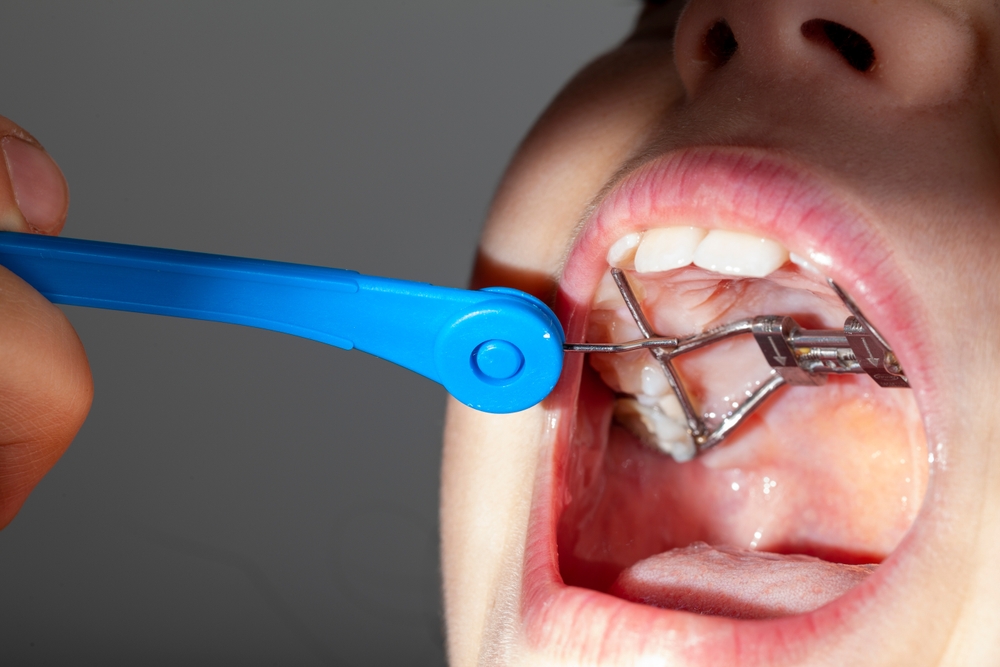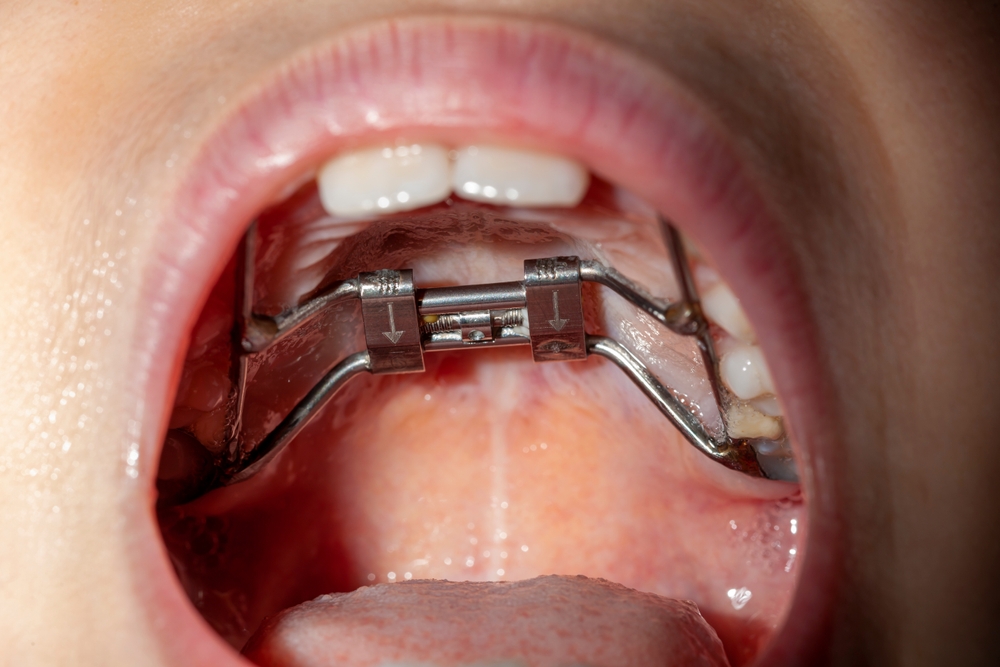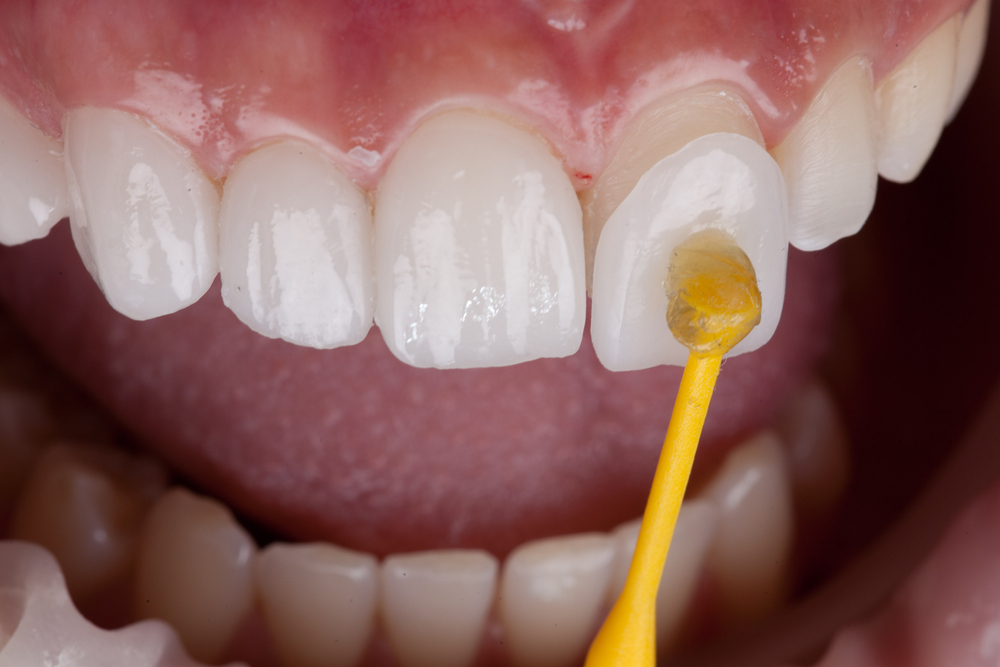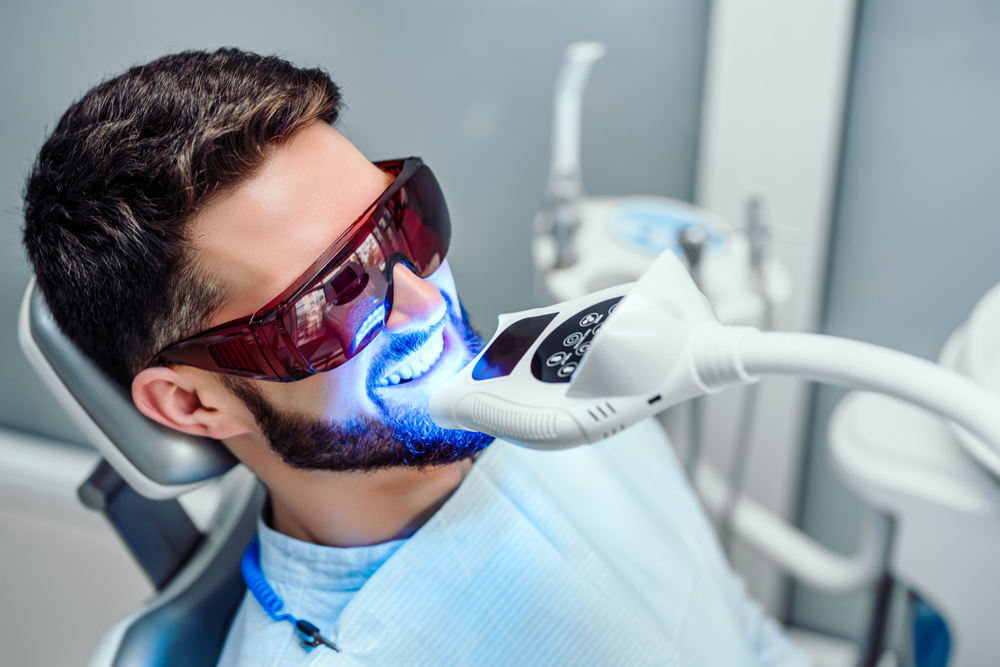In the realm of orthodontics, maxillary palatal expanders, sometimes called rapid palatal expanders, or simply as palatal expanders, play a critical role in guiding the growth of the mid-facial region in children. Understanding their benefits and importance in the overall dental health and facial structure can make a significant difference in a child’s dental development journey.
Understanding Maxillary Palatal Expanders

The maxillary palatal expander is an orthodontic device designed to widen the upper jaw or maxilla. It achieves this by applying gentle pressure on the palatal bones, gradually encouraging them to expand. As a result, it addresses the issue of a narrow upper jaw, which can lead to various dental and skeletal problems.
The relationship between the upper jaw and the lower jaw is similar to a foot in a shoe. If the shoe (upper jaw) is enlarged, then the foot (lower arch) will fit better. If the shoe is too small, then the foot can’t fit. In the case of the jaws, this might mean that the lower jaw gets trapped behind the upper jaw, leading to a condition called retrognathia, which may result in a weak chin, and possibly airway compromise. Later in life, this may contribute to disorders such as upper airway resistance syndrome, or even sleep apnea.
Benefits of Maxillary Palatal Expanders
- Correcting Crossbites: A narrow upper jaw can cause the upper teeth to bite inside the lower ones, leading to a condition known as a crossbite. This condition can result in uneven wear of teeth, gum recession, and even asymmetrical jaw growth.
- Reducing Crowding: A wider palate provides more room for permanent teeth to emerge, thus reducing or eliminating the need for tooth extractions later in orthodontic treatment.
- Improving Breathing: A narrow upper jaw can also lead to a constricted nasal passage, making it difficult to breathe. By expanding the palate, the nasal passage also becomes wider, leading to improved airflow.
- Enhancing Facial Aesthetics: An adequately developed maxilla results in better facial symmetry and a more harmonious facial appearance.
The Importance of Guiding Growth in Children
The human body is more malleable during its formative years. In orthodontics, taking advantage of this malleability can yield long-term benefits. By intervening early when the bones are still growing, orthodontists can guide the development of the jaws and ensure optimal alignment.
Starting intervention early doesn’t mean that all children will need an expander. However, it provides an opportunity for orthodontists to assess the development of a child’s jaws and palate, determining if there’s a need for expansion.
Beyond Straightening Teeth: The Need for Proper Skeletal Alignment
Orthodontics isn’t merely about achieving a perfect set of pearly whites; it’s about ensuring the harmonious growth of the teeth and jaws. Just straightening the teeth, a process known as “camouflaging,” can overlook underlying skeletal growth deficiencies. While this might offer a quick aesthetic fix, it could lead to complications in the long run.
When there’s a skeletal discrepancy between the upper and lower jaws, solely adjusting the teeth can lead to issues like:
- Temporomandibular Joint Disorders: Misalignment can result in jaw pain, difficulty in opening and closing the mouth, and even chronic headaches.
- Premature Wear of Teeth: Improperly aligned jaws can cause uneven pressure on teeth, leading to faster wear and tear.
- Compromised Aesthetics: In cases of severe jaw discrepancies, straightening the teeth without addressing the underlying skeletal issue can result in a less-than-optimal facial profile.
By focusing on the alignment of the jaws alongside straightening teeth, orthodontists can ensure a holistic approach to dental health, taking into consideration both function and aesthetics.
Early Intervention is Key
Maxillary palatal expanders have transformed the orthodontic landscape by offering a solution to address narrow upper jaws, a common developmental issue in children. By focusing on early intervention, orthodontists can guide the growth of the mid-facial region, ensuring a robust foundation for the permanent teeth to come in.
It’s essential for parents and caregivers to understand that orthodontic care is not merely about achieving a beautiful smile. It’s about laying down the foundation for optimal dental health, functionality, and overall facial harmony. Through devices like the maxillary palatal arch expander and a comprehensive approach to treatment, it’s possible to ensure that children grow up with not just straight teeth, but also well-aligned jaws that complement their facial structure.






